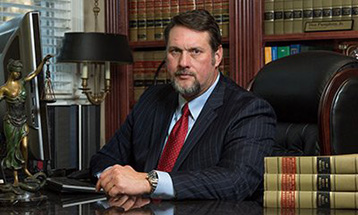- DUI
- Criminal Defense
- Florida DUI
- Traffic Offenses
- Drug Charges
- Marijuana Charges
- Violent Crimes
- Domestic Violence
- Temporary Injunctions
- Weapons Charges
- Theft Crimes
- White Collar Crime
- Juvenile Offenses
- Sex Crimes
- Violation of Probation
- Early Termination of Probation
- Seal or Expunge Criminal Record
- Criminal Appeals
- US Federal Offenses
- Misdemeanor Charges
- Felony Charges
- Co-Defendant Cases
- College Student Defense
- College Student Hearings
- FSU Students
- FAMU Students
- Florida Panhandle Arrests
- Extradition to Florida
- Bench Warrants / Warrants
- Emergency Bond Hearings
- Gambling Charges
- Drone Arrests
- Marsy’s Law
- UAS Infractions
- Introduction of Contraband
- Lying to Police
- Locations
- Case Results
- Our Firm
- Media
- Resources
- Blog
- Contact Us
The Danger Behind Florida’s ‘Two-Strikes’ Law
November 30, 2021 Don Pumphrey, Jr. Criminal Defense Social Share
Currently, Florida has more prisoners incarcerated for life with zero chance of parole than any other state in the country. Florida’s two-strikes law, which states that criminals who have already been imprisoned for one crime may be given a life sentence if they reoffend upon release, regardless of the nature of that crime, is in part a reason for this alarming statistic. According to the Sentencing Project, there are 13,600 prisoners in Florida that are serving life sentences without the possibility of parole, which totals more than a quarter of the entire number of prisoners serving such sentences nationwide.
The Prison Releasee Reoffender Act
You have probably heard of the three-strikes law that many states enacted in the 1990s to punish habitual offenders who were convicted of three or more crimes. Although three-strikes laws vary from state to state, they generally deal with serious or violent offenses and require a judge to sentence a person convicted of three or more felonies to a significantly harsher sentence than they would if they were sentenced for each felony separately. However, the number of strikes that trigger an “out” vary from state to state. Florida enacted their three-strikes law in 1995 but took it a step further in 1997 when they introduced the two-strikes law, formally known as the Prison Releasee Reoffender Act. The Act ultimately takes the power of sentencing discretion away from judges and gives it to prosecutors, allowing them to seek the maximum sentence, most often life without parole, for a defendant who commits a felony within three years of being released from prison.
Codified in Section 775.082 of the Florida Statutes, the Act defines the term “prison releasee reoffender” as any defendant who commits, or attempts to commit, the following offenses within 3 years after being released from a state correctional facility:
- Treason;
- Murder;
- Manslaughter;
- Sexual battery;
- Carjacking;
- Home-invasion robbery;
- Robbery;
- Arson;
- Kidnapping;
- Aggravated assault with a deadly weapon;
- Aggravated battery;
- Aggravated stalking;
- Aircraft piracy;
- Unlawful throwing, placing, or discharging of a destructive device or bomb;
- Any felony that involves the use or threat of physical force or violence against an individual;
- Armed burglary;
- Burglary of a dwelling or burglary of an occupied structure; or
- Any felony violation of s.07, s. 800.04, s. 827.03, s. 827.071, or s. 847.0135(5);
Upon proof that the prosecutor establishes by a preponderance of the evidence that a defendant is a prison release reoffender as defined under Section 775.082, the defendant is not eligible for sentencing under the sentencing guidelines and must be sentenced as follows:
a. For a felony punishable by life, by a term of imprisonment for life;
b. For a felony of the first degree, by a term of imprisonment of 30 years;
c. For a felony of the second degree, by a term of imprisonment of 15 years; and
d. For a felony of the third degree, by a term of imprisonment of 5 years.
A defendant sentenced as a prison releasee reoffender shall be released only by expiration of sentence and shall not be eligible for parole, control release, or any form of early release. This means a prison release reoffender must serve 100 percent of the court-imposed sentence.
Recent Backlash
This law, combined with the fact that Florida abolished parole in 1983 and Florida governors rarely grant clemency, means that prisons are currently overflowing with individuals who committed crimes, such as robberies or thefts that resulted in no injuries, who may have long since been rehabilitated. The law has faced its share of backlash, including attempts to repeal the law by State Senator Jeff Brandes, a St. Petersburg Republican who seeks to have the law repealed, calling it “an incredibly punitive law that is totally arbitrary”. He brought SB 1716 to the Senate in 2020, which aimed to reduce sentences for former inmates who reoffend within the statutory 3 years of prison by permitting qualifying inmates to apply for a re-sentencing hearing in the hopes of reducing their sentences. The bill died in the Appropriations Subcommittee on Criminal and Civil Justice.
However, this did not stop The Marshall Project and the Tampa Bay Times from joining forces to investigate the law, how it is applied, and why it should be reexamined. They published their findings on November 11, 2021, highlighting individuals, such as Mark Jones, a veteran who struggled with alcoholism and first spent a year in prison for stealing a tool kit from Home Depot in 2008. In 2011, he was sentenced under the two-strikes law to life without parole for a failed carjacking, an incident he states he doesn’t remember because he was blackout drunk, but he thinks he was intending to ask for a ride. A six-person jury, who were instructed to determine guilt or innocence, but were never actually told that a guilty verdict could result in Jones serving life in prison, decided his fate. When the victim in his case learned of this, she called the prosecutor to complain the punishment was too harsh. He is currently a law clerk in prison, has been sober for 10 years, and “has a spotless disciplinary record”, however, the courts have upheld his life sentence despite his attempts at appeal.
Dorian Mackeroy, one of the first people ever charged under the two-strikes law, first served 4 years in prison at age 16 for taking part in a robbery with other teens. Because “the law makes no exceptions for people who committed their first crime as a young adult, or in Mackeroy’s case, as a youth,” his robbery counted as his first strike. At 22, he was sentenced to life without parole for robbery, a crime the jury took only 90 minutes to find him guilty of, also citing alcoholism as a key factor in why he committed his second offense. Had he committed the crime “just a month earlier, before the two-strikes law took effect, sentencing guidelines may have allowed his release after 11 years.” Instead, he has served almost 25 years in prison with an almost perfect disciplinary record. This punishment was even more bewildering to Mackeroy when he learned that his younger brother was murdered, and the offender was released from prison in just over 8 years.
Furthermore, the investigation highlights that the law has been disproportionally applied to Black men, who comprise “almost 75% of those serving time because of the 1997 law.” “About 55% of all prisoners in the state are Black. Their most common charge was armed robbery, not homicide.” It also notes that the law has cost the state more than $330 million last year, based on the agency’s most recent annual coverage cost per prisoner estimate of $24,265. Although many prosecutors argue the law is meant to keep murderers and rapists behind bars, they have sought “increased prison time in about 90% of the eligible times, or more than 80,000 times since 2010.”
It’s time Florida grapples with the question – where is the justice when an individual who did not end anyone’s life is serving the same or longer sentence as those who have?
This article was written by Sarah Kamide










